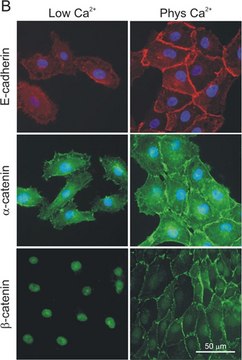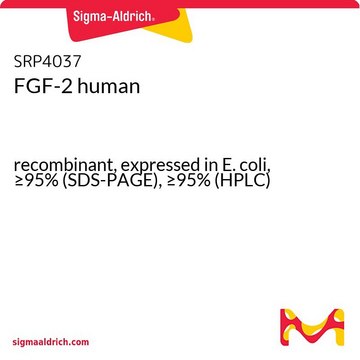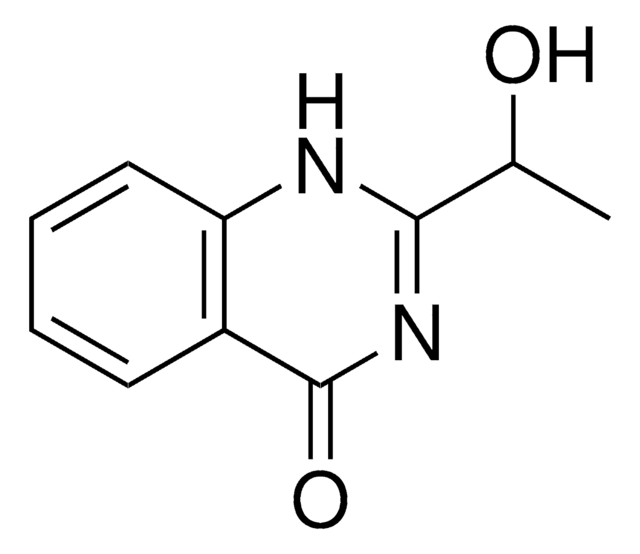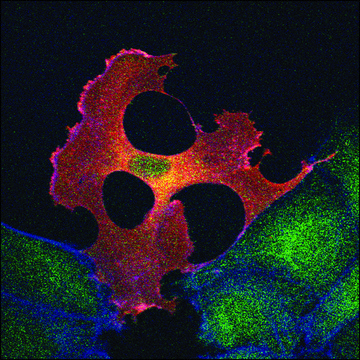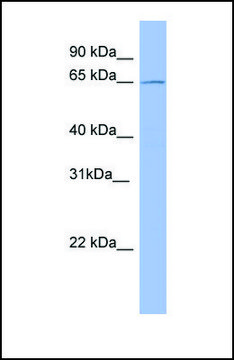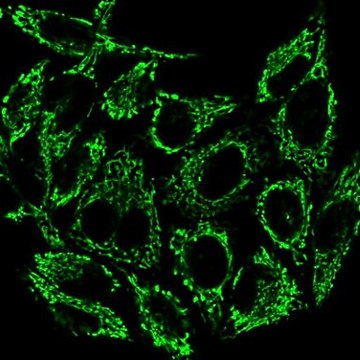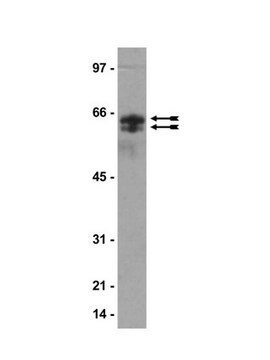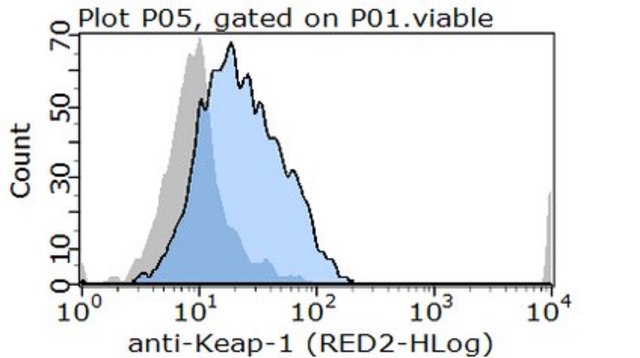SRP5171
Catenin α, GST tagged human
recombinant, expressed in baculovirus infected Sf9 cells, ≥70% (SDS-PAGE), buffered aqueous glycerol solution
Synonym(s):
CAP102, CTNNA1, FLJ36832
Sign Into View Organizational & Contract Pricing
All Photos(1)
About This Item
Recommended Products
biological source
human
recombinant
expressed in baculovirus infected Sf9 cells
Assay
≥70% (SDS-PAGE)
form
buffered aqueous glycerol solution
mol wt
~123 kDa
NCBI accession no.
application(s)
cell analysis
shipped in
dry ice
storage temp.
−70°C
Gene Information
human ... CTNNA1(1495)
General description
Catenin α is a novel actin-binding and -bundling protein. Catenin α is responsible for organizing and tethering actin filaments at the zones of E-cadherin-mediated cell-cell contact. Monomeric Catenin α can bind strongly to E-Cadherin-β-Catenin, whereas the dimer preferentially binds actin filaments. Different molecular conformations are associated with these different binding states, indicating that Catenin α is an allosteric protein. Catenin α directly regulates actin-filament organization by suppressing Arp2/3-mediated actin polymerization, likely by competing with the Arp2/3 complex for binding to actin filaments
Physical form
Supplied in 50mM Tris-HCl, pH 7.5, 150mM NaCl, 10mM glutathione, 0.1mM EDTA, 0.25mM DTT, 0.1mM PMSF, 25% glycerol.
Preparation Note
after opening, aliquot into smaller quantities and store at -70 °C. Avoid repeating handling and multiple freeze/thaw cycles
Storage Class Code
10 - Combustible liquids
WGK
WGK 1
Regulatory Information
新产品
Choose from one of the most recent versions:
Certificates of Analysis (COA)
Lot/Batch Number
Don't see the Right Version?
If you require a particular version, you can look up a specific certificate by the Lot or Batch number.
Already Own This Product?
Find documentation for the products that you have recently purchased in the Document Library.
D L Rimm et al.
Proceedings of the National Academy of Sciences of the United States of America, 92(19), 8813-8817 (1995-09-12)
Calcium-dependent homotypic cell-cell adhesion, mediated by molecules such as E-cadherin, guides the establishment of classical epithelial cell polarity and contributes to the control of migration, growth, and differentiation. These actions involve additional proteins, including alpha- and beta-catenin (or plakoglobin) and
Frauke Drees et al.
Cell, 123(5), 903-915 (2005-12-06)
Epithelial cell-cell junctions, organized by adhesion proteins and the underlying actin cytoskeleton, are considered to be stable structures maintaining the structural integrity of tissues. Contrary to the idea that alpha-catenin links the adhesion protein E-cadherin through beta-catenin to the actin
Our team of scientists has experience in all areas of research including Life Science, Material Science, Chemical Synthesis, Chromatography, Analytical and many others.
Contact Technical Service